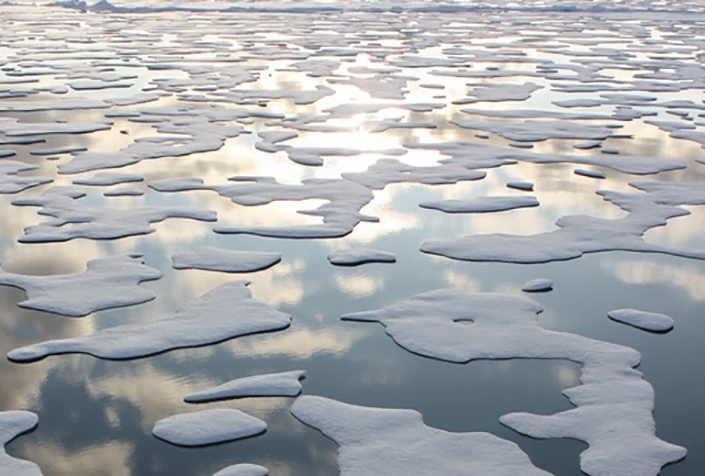Earth’s shrinking cryosphere: Team makes first-ever global assessment

Oliver Frauenfeld, an associate professor and climatologist in Texas A&M University’s Department of Geography, collaborated with scientists conducting the first global assessment of the extent of snow, ice cover, and frozen ground on earth’s surface, a critical factor in cooling the planet through reflected sunlight, and its response to increasing temperatures.
Frauenfeld and the team of researchers discovered that the Earth’s cryosphere is shrinking by 33,000 square miles (87,000 square kilometers) per year. Their research findings were recently published in Earth’s Future, AGU’s journal for interdisciplinary research on the past, present, and future of our planet and its inhabitants.
This means that all of the areas with frozen water and soil on Earth shrank by about the size of Lake Superior per year on average, between 1979 and 2016, as a result of climate change. This research is the first to make a global estimate of the surface area of the Earth covered by sea ice, snow cover, and frozen ground.
“Despite frequent reports of a ‘shrinking’ cryosphere, previous estimates only focused on individual variables, like sea ice area or snow cover extent. No one had attempted to come up with a global estimate of the cryosphere as a whole, and quantify the magnitude of its decrease. Our record of cryospheric extent can serve as a useful climate change indicator, similar to other vital signs like global temperature or sea level,” Frauenfeld said.
The extent of land covered by frozen water is just as important as its mass because the bright white surface reflects sunlight so effectively, cooling the planet. Changes in the size or location of ice and snow can alter air temperatures, change the sea level and even affect ocean currents worldwide.
“The cryosphere is one of the most sensitive climate indicators and the first one to demonstrate a changing world,” said first author Xiaoqing Peng, a physical geographer at Lanzhou University. “Its change in size represents a major global change, rather than a regional or local issue.”
To compile their global estimate of the extent of the cryosphere, the authors divided up the planet’s surface into a grid system. They used existing data sets of global sea ice extent, snow cover, and frozen soil to classify each cell in the grid as part of the cryosphere if it contained at least one of the three components. Then they estimated the extent of the cryosphere on a daily, monthly, and yearly basis and examined how it changed over the 37 years of their study.
“This estimate of cryospheric extent is an important first step,” according to Frauenfeld. “What would be even better is a similar record of cryospheric volume, because it would allow us to link cryospheric variability to other climate change impacts, like sea level rise. Unfortunately we do not currently have good enough observations for all parts of the globe to develop robust cryospheric volume estimates.”
The authors say that the global dataset can now be used to further probe the impact of climate change on the cryosphere, and how these changes impact ecosystems, carbon exchange, and the timing of plant and animal life cycles.

